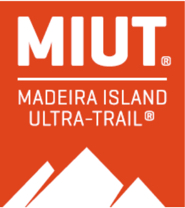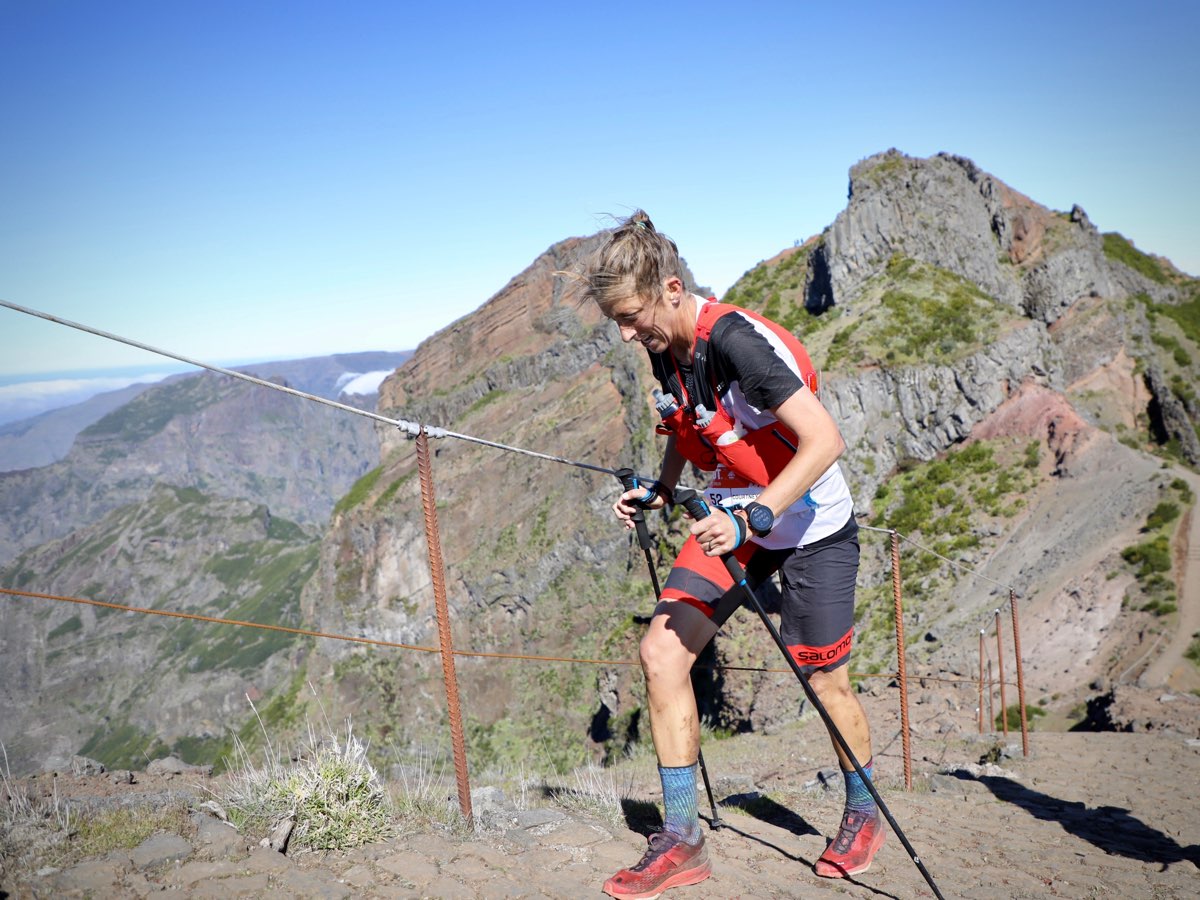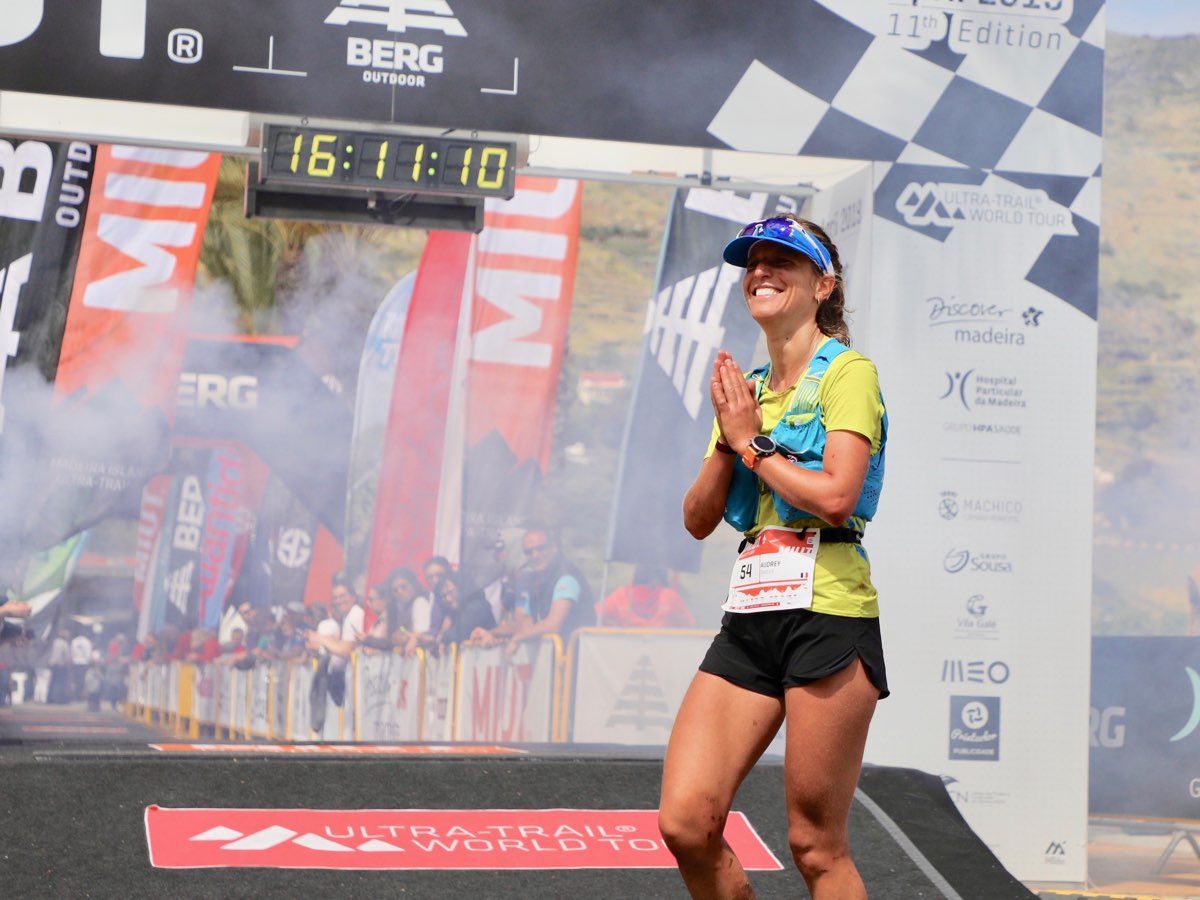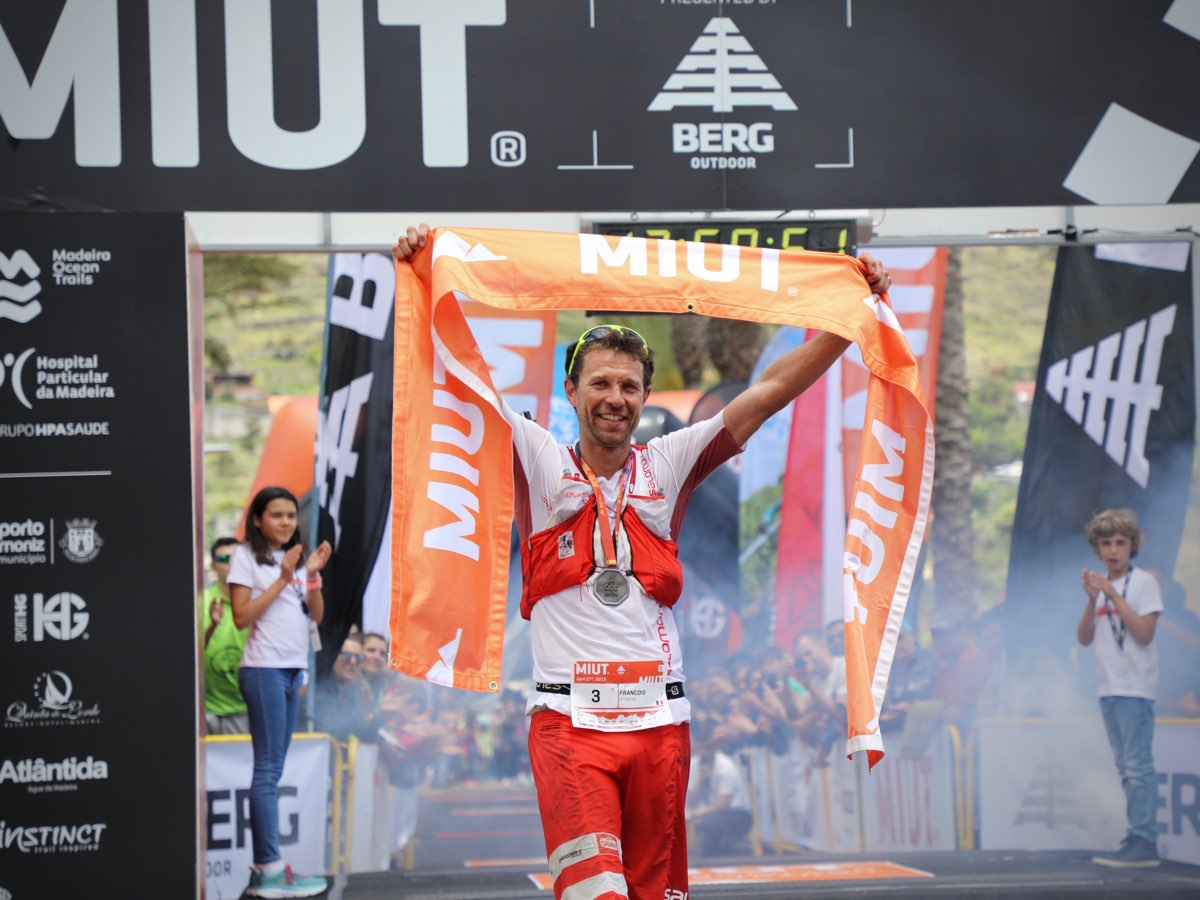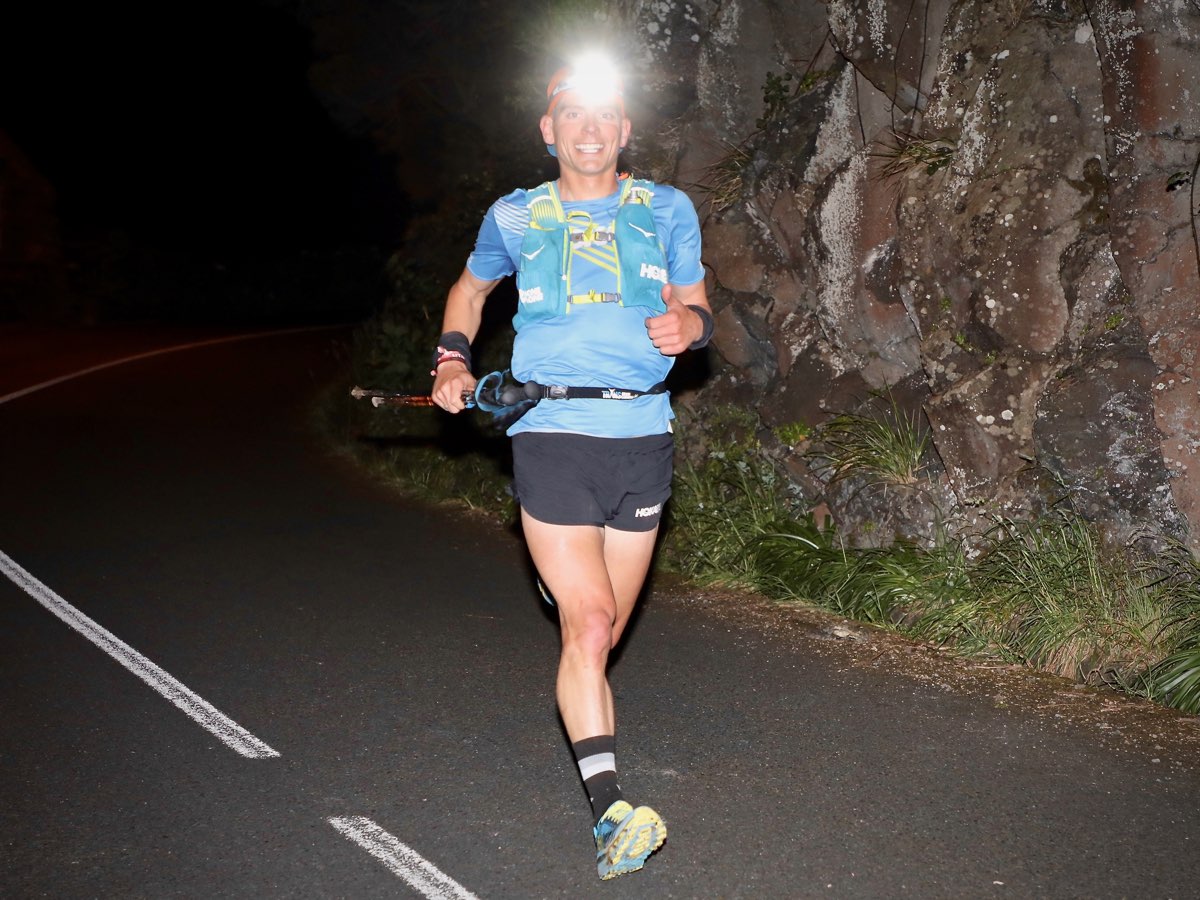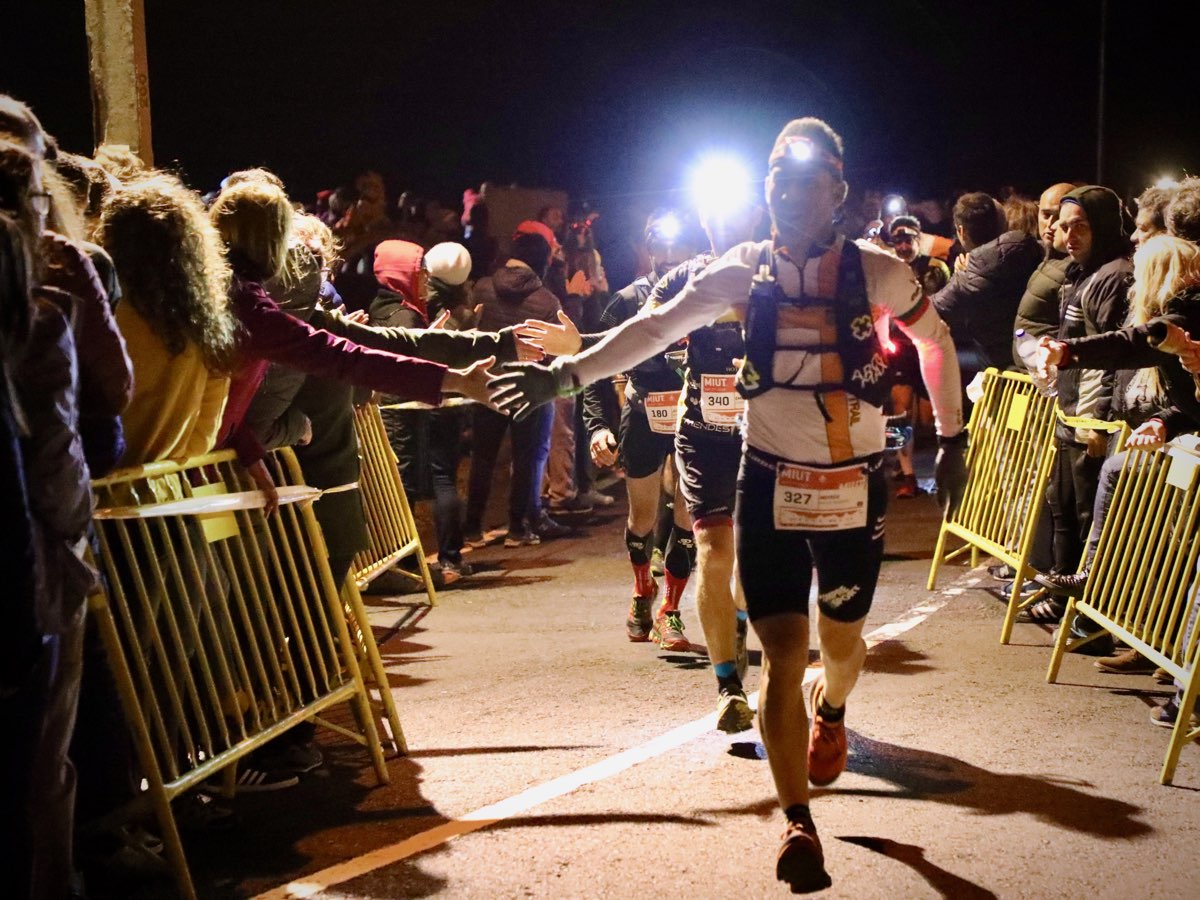The 2019 Madeira Island Ultra-Trail (MIUT) began in the coastal village of Porto Moniz, on the island’s northwest coast, traced through the island’s interior mountain ranges, traversed deep and dissected valleys, and finished in the port city of Machico, on the island’s southeast coast. The route added up to 115 kilometers (71.5 miles) and 7,200 meters (23,600 feet) of climbing. The course itself is diverse, with a mix of steep and technical terrain as well as flat and fast roads and the island’s famous levada trails, or the pathways next to irrigation ditches.
This year’s edition, the 11th, saw relatively fair weather. With a midnight start and seven hours of night running to begin, runners experienced cool temperatures through the night with wind in some locations and fog in others. After sunrise as the leaders headed toward the island’s highest and most exposed terrain, a strong wind but totally clear skies greeted them there. In the later morning and early afternoon, as the leaders traveled the race’s final 20 kilometers at low altitude, temperatures remained mild thanks to decent cloud cover, though the relative humidity was quite high.
Their races played out quite differently, but both the USA’s Courtney Dauwalter (pre-race and post-race interviews) and France’s François D’haene (pre-race and post-race interviews) ran away from their respective fields to take home dominant victories. For Courtney, she took the lead on the race’s first major climb after 5k, setting the women’s race tone and pace, and never looked back. François shared the race with other runners until just before 80k before closing the race’s final 35k at a pace no one else could match.
This was the seventh race, a series race, in the 2019 Ultra-Trail World Tour.
iRunFar is an independent entity covering the sports of trail running and ultrarunning around the world. If you like what we’re doing, consider becoming a monthly patron on Patreon or making a one-time donation to support our work. Thank you!
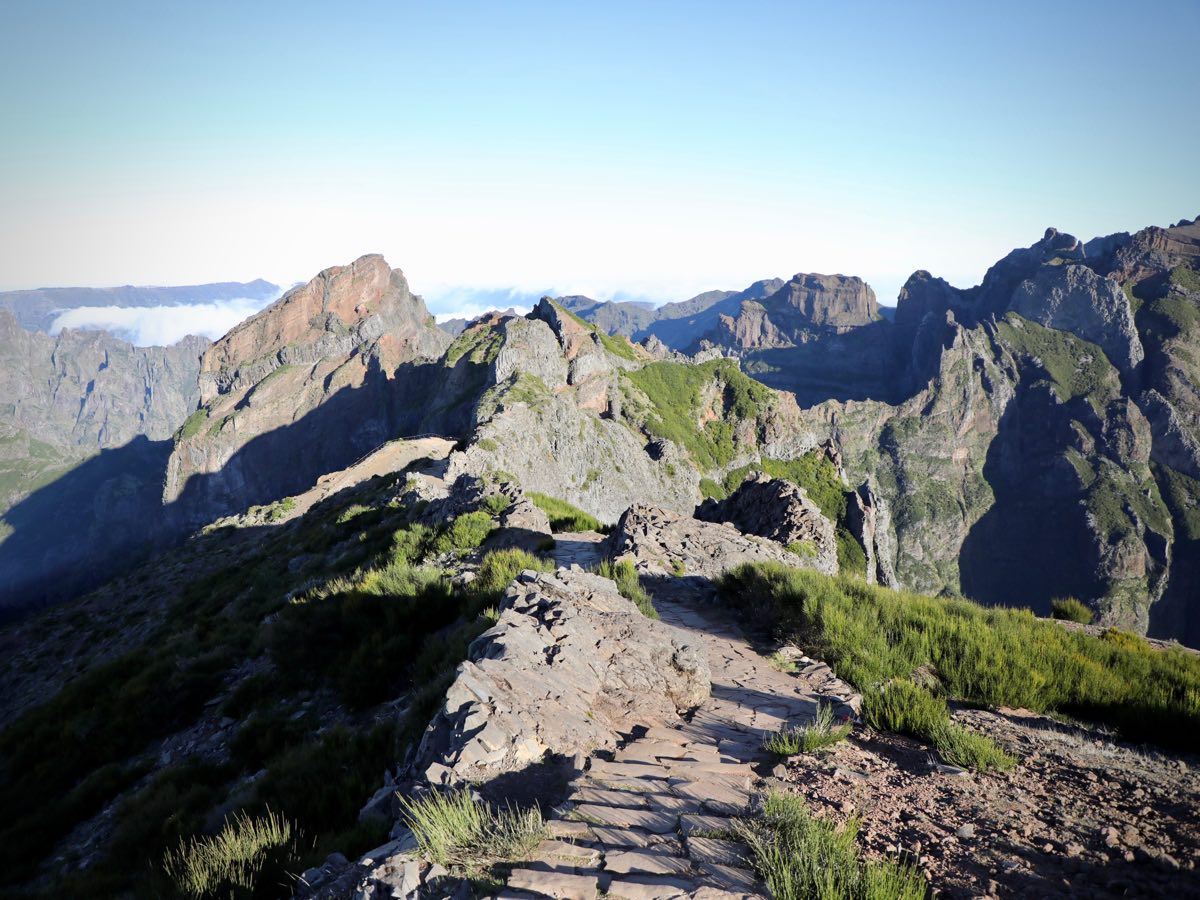
The high country of Madeira Island over which the Madeira Island Ultra-Trail travels. All photos: iRunFar/Meghan Hicks
2019 Madeira Island Ultra-Trail Women’s Race
Ahead of the race, many wondered how exactly the USA’s Courtney Dauwalter (pre-race and post-race interviews) might fare on the stairs and gnarly descents of Madeira Island. I think we all have our answer now: Dauwalter is a master of all terrain. But let’s back up to the beginning. After chasing defending champion Mimmi Kotka (pre-race interview) through the first couple kilometers, Dauwalter settled into the lead on the race’s first big ascent to Fanal, the first checkpoint at 14k. There, she posted a gap of just under two minutes to the rest of the women. While behind her there were several early shake-ups on who was in the immediate chasing position and while some women posted faster times than her on the earlier, big descents, no woman could match her overall pace. That is, on every climbing or flatter section, Dauwalter’s gap on the women’s field grew. And after the first couple large descents, she was making time on almost all of the rest of the field on the really technical sections and downhills, too.
There was one woman who exceeded Dauwalter’s pace through the race’s most technical 5.5k after the island’s high point at Pico Ruivo and on some of the descents later in the race, and that’s Dauwalter’s country mate Katie Schide (pre-race and post-race interviews). From 61k through 99k, Schide was overall gaining on Dauwalter, picking up a couple minutes on her at the majority of checkpoints. At 99k, Schide’s deficit to Dauwalter had decreased to about 14 minutes, and with 16k yet to race, we all wondered if a race was about to, indeed, happen.
But there was so much runnable terrain after 99k, and let’s just say that Dauwalter can really run. Her pace on the flattest, last kilometers was so strong that she was, in fact, faster than the men’s champion there. In the 11.8k between the final aid station of Larano and the finish, Dauwalter ran a 1:05:14 split. Men’s champion François D’haene ran 1:05:39. On a quick check of the men’s top 10, only one man posted a faster split in that section than she. Dauwalter crossed the MIUT finish line in Machico looking relieved, happy, and somehow still fresh as the women’s champion.
Not only was Schide super strong all race, especially in the mountainous and technical sections, but she also had a super-positive demeanor out there, too. Schide seemed to move with a kind of levity that made moving fast look easy. She took second place, doing so with a large gap over the rest of the women’s field.
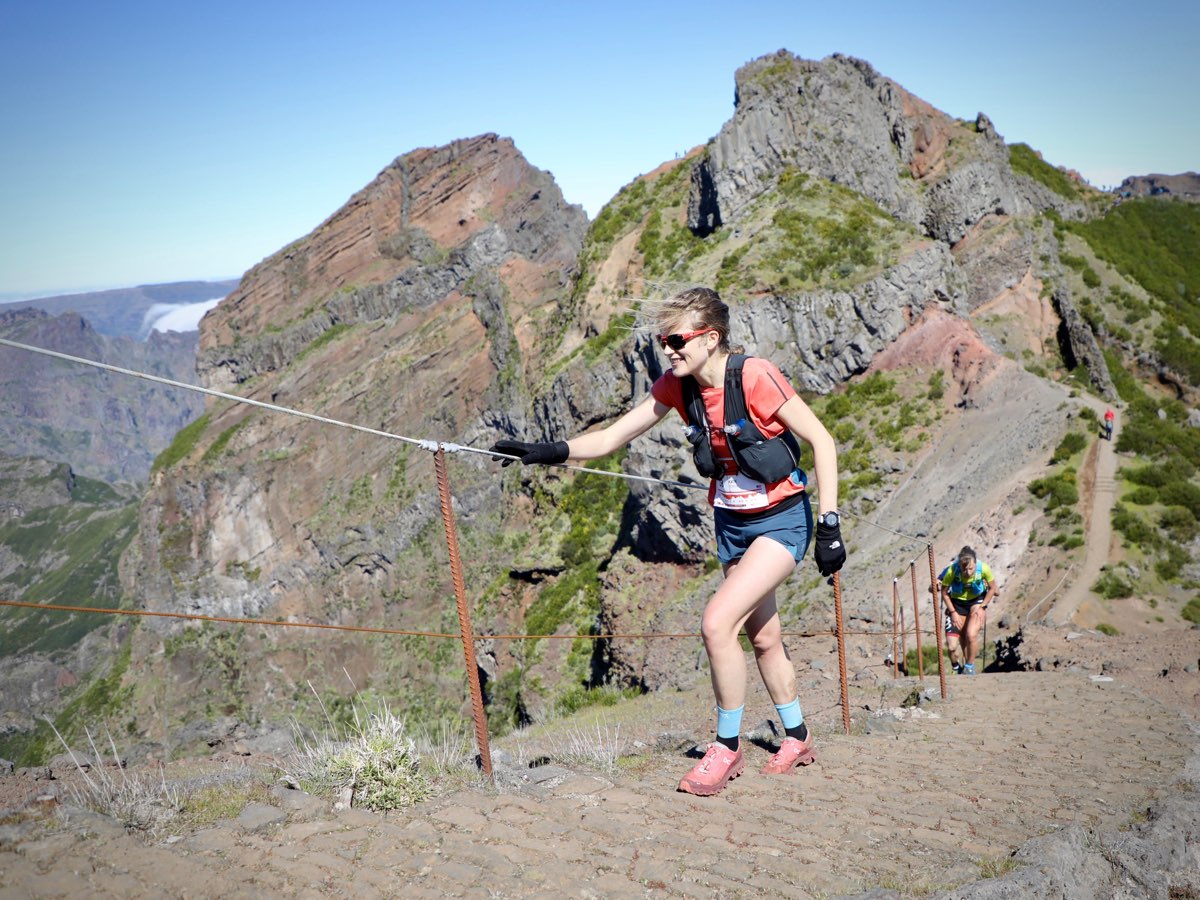
Katie Schide taking the big mountains in stride on her way to second place. Third place Audrey Tanguy is in the background.
Schide and France’s Audrey Tanguy (post-race interview) are friends, the pair going one-two at the 85k race of MIUT last year and racing as a team in a recent partner race in Europe. Schide and Tanguy fell into step with each other before the Chão da Ribeira aid station at 22k, and though they continued to leapfrog a bit, they were clearly working together for a lot of the middle of the race. This pair-up lasted basically through Chão da Lagoa at 81k, after which Schide surged. Though Tanguy lost contact with Schide, her late-race effort remained strong–and stronger than anyone else behind her. By the time she crossed the finish in third place, there was no other woman in sight for a half hour.
I’m not going to lie, Spain’s Maite Maiora looked a little rough at the finish, with giant bruises and some trail rash on her left leg and her arms and legs coated in dirt–she must have gone full body to the ground at some point–but her condition there was just temporary and doesn’t match the strength she showed on course. A lot like men’s fifth-place finisher Lambert Santelli, who’s race is described below, Maiora raced with incredible consistency all day in fourth and fifth positions, before eventually moving for good into fourth where she would finish. Like Schide, she, too, was super positive on course. In fact, when we saw her approaching 1,800-meter Pico Areeiro, high wind was pushing her sideways on the exposed trail and it whipped her visor off her head and off the cliff. No matter, Maiora was still content.
France’s Jocelyne Pauly said after the race that it was a struggle for her. Early race, she took a hard fall onto some rocks, one of which went right into her rib cage and caused pain and difficulty breathing for the rest of the race. As such, she looked really relieved to cross the finish in fifth place.
Defending champion Kotka looks to have had a pretty tough day. Early in the race, she was strong on the downhills, but would lose time to the top women on the uphills. Later in the race she slowed and finished in 13th place.
2019 Madeira Island Ultra-Trail Women’s Results
- Courtney Dauwalter (Salomon) – 15:17:05 (pre-race and post-race interviews)
- Katie Schide (On Running) – 15:43:43 (pre-race and post-race interviews)
- Audrey Tanguy (Hoka One One) – 16:10:59 (post-race interview)
- Maite Maiora (Raidlight) – 16:40:12
- Jocelyn Pauly (Raidlight) – 17:17:47
- Kaytlyn Gerbin (La Sportiva) – 17:34:36
- Francesca Pretto (La Sportiva) – 18:24:22
- Elisabeth Borgersen (SCOTT) – 18:52:09
- Geraldine Prost – 19:35:58
- Emőke Paál – 20:23:49
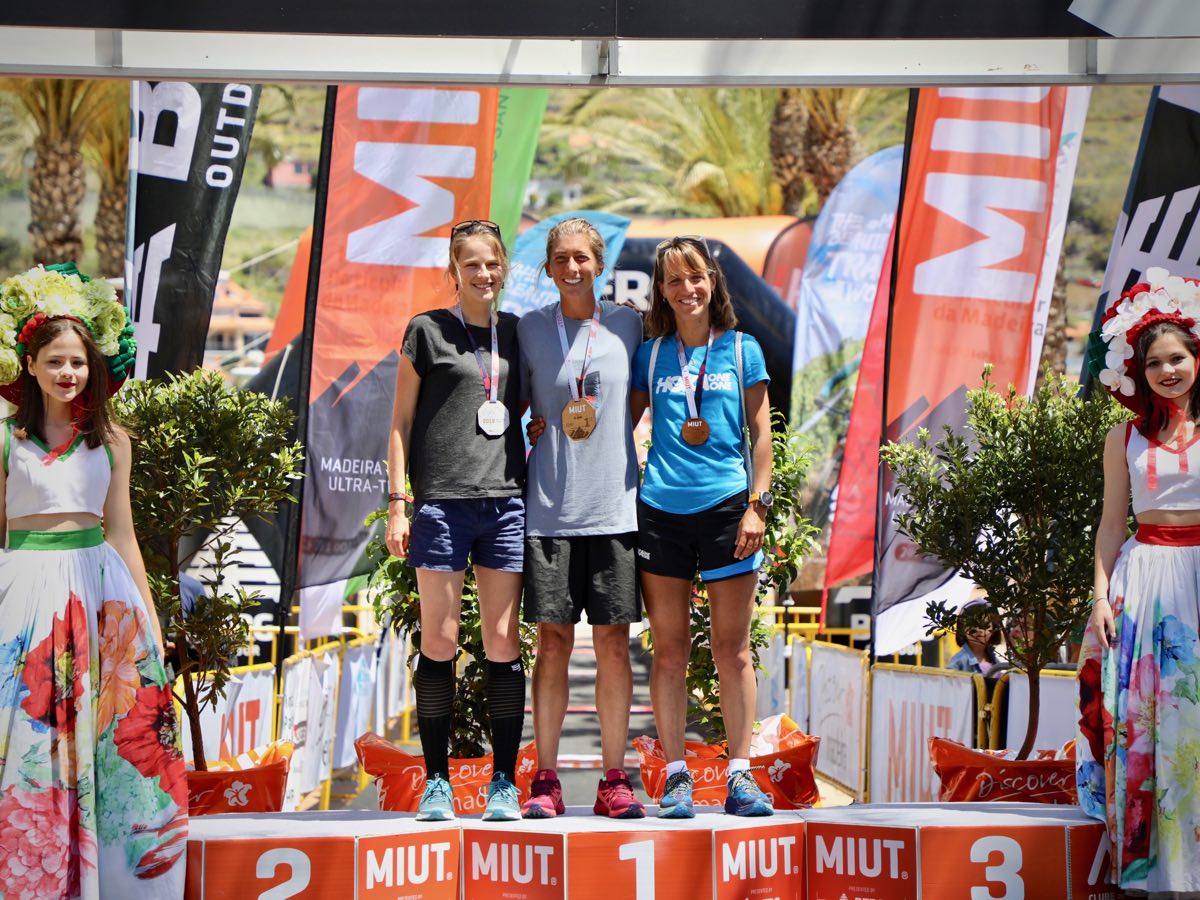
The 2019 Madeira Island Ultra-Trail women’s podium (l-to-r): 2. Katie Schide, 1. Courtney Dauwalter, and 3. Audrey Tanguy.
2019 Madeira Island Ultra-Trail Men’s Race
The way I see it, the race for the men’s podium can be divided into three parts: 1. The early race where many men ran close to the lead; 2. The breakaway of the trio composed of France’s François D’haene (pre-race and post-race interviews), Tim Tollefson (pre-race and post-race interviews) of the USA, and France’s Germain Grangier from the rest of the field; and 3. François’s solo, late-race dominance.
We begin with part one, or the first 30k, where a long string of men ran within a couple minutes of the lead. At the first checkpoint of Fanal, 14k into the race, it was essentially a 20-man group within about two minutes of the lead. And by 22k at Chão da Ribeira, 15 men were still right there. The pacesetters of this group varied from moment to moment, but included defending champion Andris Ronimoiss (pre-race interview) of Latvia, Sweden’s Petter Restorp, and France’s Thomas Angeli. Of course, the eventual podium finishers were there too, lingering.
Somewhere before Estanquinhos at 32.5k, D’haene, Tollefson, and Grangier started running together and breaking free of the rest of the men’s field, which leads us to part two of the men’s race. At 32.5k, they were 2.5 minutes ahead of everyone else, at 41k it was five minutes, and by 61k at Curral das Freiras, the trio was a full eight minutes off the front. But almost all good bands eventually break up, and this group met that same fate at 61k.
Part three of the men’s front race began when Tollefson took several extra minutes at the 61k aid station, and left about three minutes behind D’haene and Grangier. And on the massive climb to Madeira Island’s high point of Pico Ruivo between 61k and 71.5k, Tollefson lost more time, arriving to the summit 14 minutes behind the lead and in fourth place. D’haene and Grangier stayed together through 81k at Chão da Lagoa, after which D’haene took over solo leadership duties. From there to the finish, D’haene’s lead on the field grew, such that he crossed the finish with no one in sight for almost 25 minutes. His victory makes it his second MIUT win, and shows he’s beginning his 2019 season in fine form.
Switzerland’s Diego Pazos (post-race interview) is a great example of how you can run your own race and podium in a long ultramarathon. After running the first 15k close to the lead, Pazos spent the next marathon distance chilling, running around seven to eight minutes off the lead. Then, on the big climb out of Curral das Freiras to the island high point between 61k and 71.5k, his strong ascending moved him into podium position. For the next 15-plus-k and through the race’s most difficult terrain, Pazos recorded almost the same splits as eventual winner D’haene, which allowed him to move up into second place after the 80k point, a position he held to the finish.
When we saw Tollefson at about 76k and in fourth, he said that his climbing legs were cooked but that he could still run the downhills and flats alright. It was clear that he was planning to keep his foot on the gas as best as he could. Relentless forward progress, as they say, and he moved up into third position before Portela at 99k and held it until the finish.
Ahead of the race, Romania’s Robert Hajnal spent about 1.5 months living and running on Madeira Island to specifically prepare for MIUT. His preparations certainly paid off. After chilling outside of the men’s top 10 for the first half of the race, he stayed strong in the race’s second half, consistently moving up positions from checkpoint to checkpoint, and generally looking like he was having a good time doing so. Finally, at Portela at 99k, Hajnal arrived in fourth position, which he would hold until the finish.
France’s Lambert Santelli had an incredibly consistent race. For pretty much all 115k, he ran in fifth or sixth position. Each time we saw him, he seemed in total control. He ultimately found his final fifth-place position at 99k, and maintained it to the finish.
Defending champion and early race pacesetter Ronimoiss dropped at 32.5k. And Grangier, who ran at the lead of the race, ran into problems starting around the Poiso checkpoint at 90.5k. Around then he fell and became injured, and after that traveled slowly to Portela at 99k where he dropped out.
2019 Madeira Island Ultra-Trail Men’s Results
- François D’haene (Salomon) – 13:49:36 (pre-race and post-race interviews)
- Diego Pazos (Compressport) – 14:13:59 (post-race interview)
- Tim Tollefson (Hoka One One) – 14:36:18 (pre-race and post-race interviews)
- Robert Hajnal (Altra) – 14:47:00
- Lambert Santelli – 14:50:01
- Guillaume Beauxis (Hoka One One) – 14:59:43
- Luís Fernandes – 15:04:36
- Romain Olivier (Instinct) – 15:06:05
- Arthur Joyeux-Bouillon (Compressport) – 15:08:32
- Petter Restorp – 15:20:48
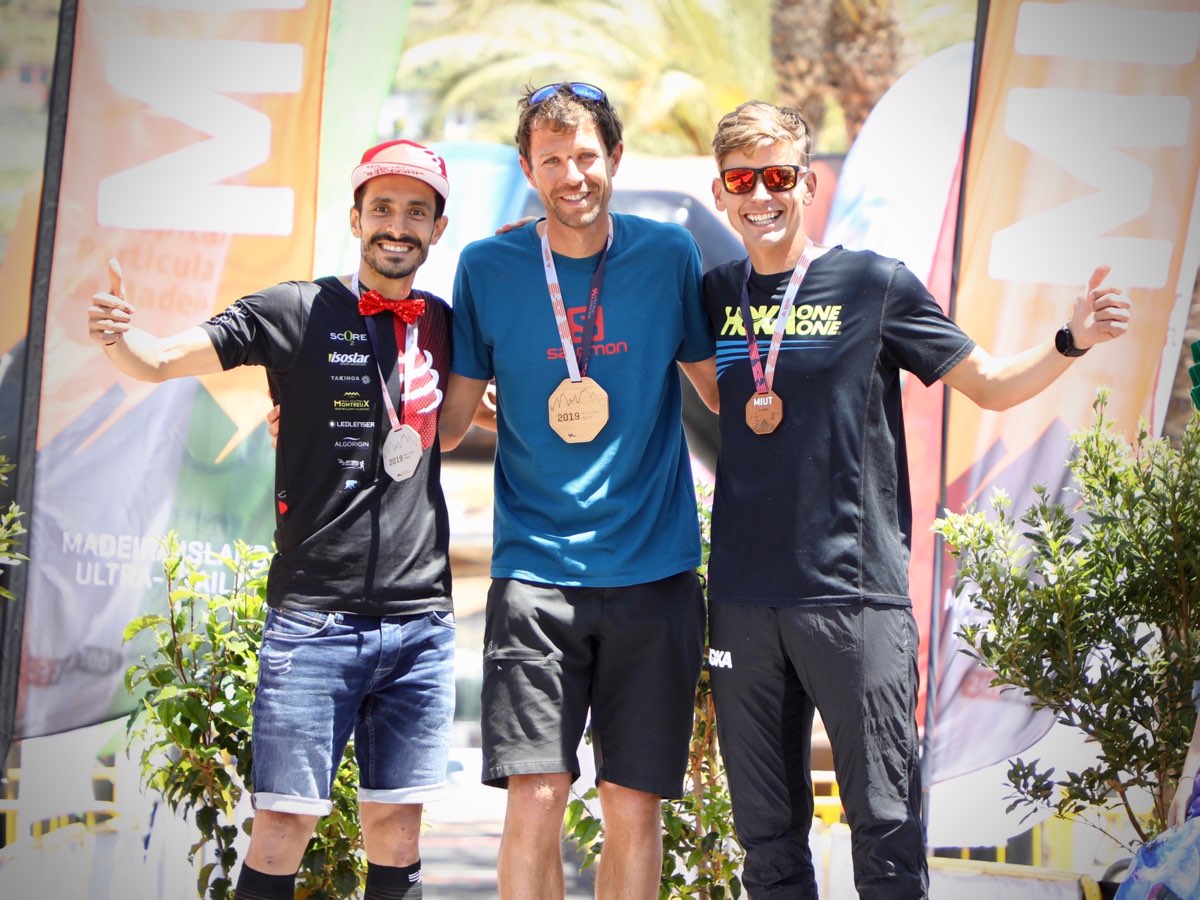
The 2019 Madeira Island Ultra-Trail men’s podium (l-to-r): 2. Diego Pazos, 1. François D’haene, and 3. Tim Tollefson.
Coverage Thanks
Thank you to Mauri Pagliacci for his office assistance. Thank you to João Guerreiro, Dani Zigerlig, and Nathalie Maurhofer for their field assistance. Our live coverage couldn’t have happened without this team!
